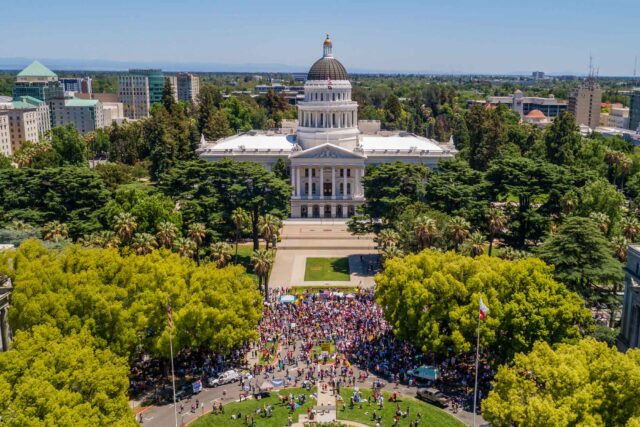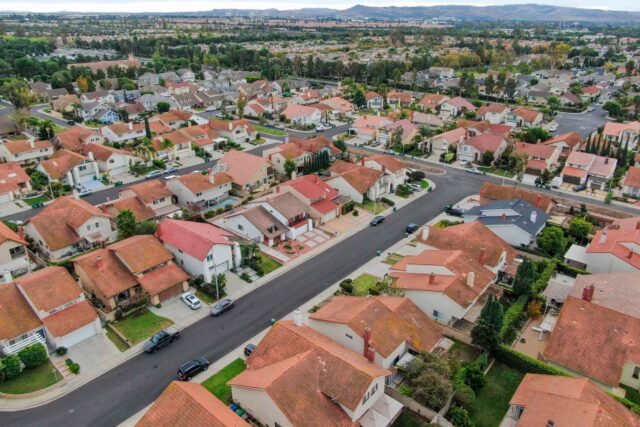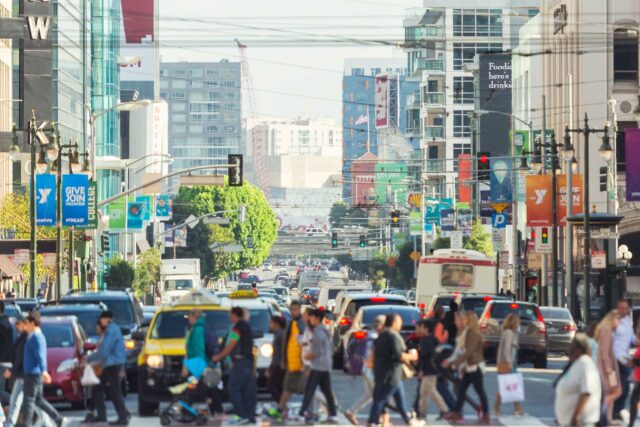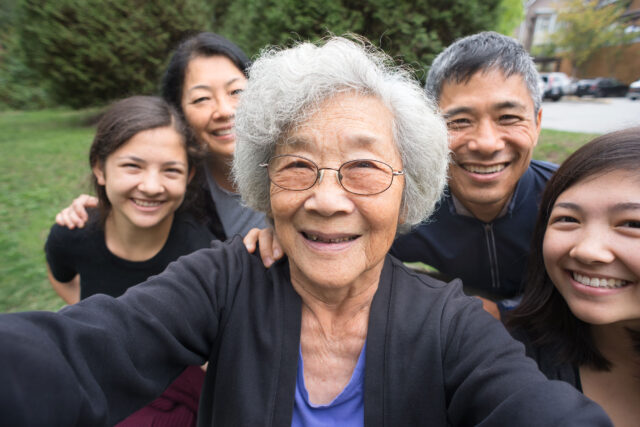February is Black History Month, a time to consider how California’s Black population is faring. Although the African American population is relatively small as a share of the total in California, the state is large enough to hold a significant fraction of the Black population in the nation as a whole. One in 20 Black Americans lived in California in the most recent Census count, and California’s Black population is larger than that of all but five other states (Texas, Georgia, Florida, New York, and North Carolina).
In California’s early days, few African Americans lived in the state. But the Black population surged during World War II, as Black Americans moved to the state to support the industrial war effort. By the 1980 Census California’s black population had grown to its peak—7.7% of the total population. Since then the share has slipped to 5.3%, as immigration has transformed California into a more racially and ethnically diverse state with substantial Latino (39%) and Asian American (15%) populations but relatively few Black immigrants.
The decades after World War II saw tremendous gains for many Americans. While standards improved greatly for California’s Black community and incomes rose decade by decade, progress stalled in the 1990s. In 1950, 83% of Black Californians made less than twice the poverty level, and this rate fell to 41% in 1990. But in 2020, it still stood at 36%. Black Californians currently have the lowest household income of any major racial or ethnic group in the state.
Rates of college completion have risen over time for Black Californians as for all Californians, but not as far or as fast. Rates remain far below those of white or Asian American and Pacific Islander residents—however, rates are higher than those among Latino residents.
Homeownership is an important indicator of economic progress. “Redlining”—or denying a creditworthy applicant a home loan in certain neighborhoods—left African Americans uniquely far behind in home ownership, blocked from a key means of building wealth. Home ownership rates for Black Californians today are lower than for any other major racial or ethnic group, and comparable to rates for this community in 1940.
Today, California’s Black community is geographically concentrated, with most Black Californians living in Los Angeles, the East Bay of the San Francisco Bay Area, and Sacramento. In this respect, Black Californians are more similar to Asian American Californians than to white or Latino Californians, who tend to be more broadly distributed throughout the state.
The small share of Black Californians may shrink further as both Black and white people amount to a disproportionate share of the recent migration from California to other states. Moreover, few Black immigrants have come to California from other countries: 3% of Black Californians are noncitizens, and 4% are naturalized immigrants. However, in contrast to the Latino community, California’s immigrant Black community is generally better off than its native-born counterpart. Incomes are higher ($68,000 vs. $53,000) and college graduation rates are close to those of non-Hispanic whites (42% vs. 45% for non-Hispanic whites).
Black Californians play an important role in the state’s politics, participating in elections at rates close to those of white residents (who have the highest participation rates of any major racial or ethnic group). Perhaps as a result, African Americans make up a significant share of the state’s elected officials, representing diverse communities without a majority of Black residents and strengthening the voice of Black Californians in directing state policy.
California’s African American community has never been large, but it remains vital to the political, economic, and cultural history of California—and the nation.
Topics
Census Population racial disparitiesLearn More

California’s Population

Redistricting and the Changing Demographics of the California Legislature

Racial/Ethnic Differences in Who’s Leaving California

California’s Housing Divide

New Census Data Sheds Light on California’s Changes

California’s Hispanic Community

California’s Native American Community


